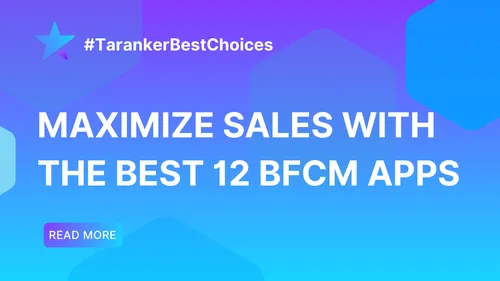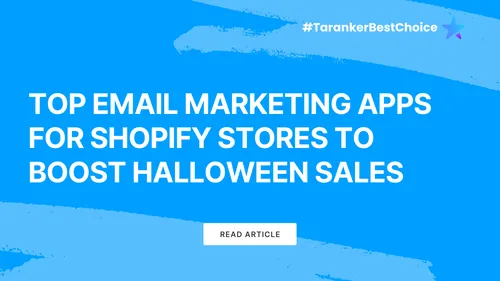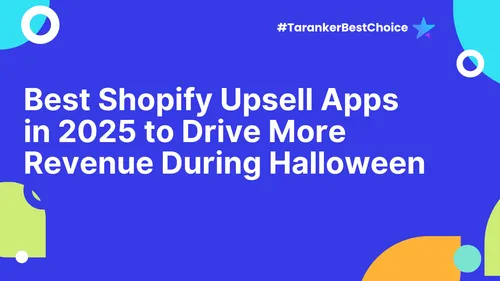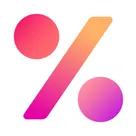Shopify apps play a crucial role in enhancing store functionality, automating operations, and increasing sales. Whether you're looking for SEO tools, marketing automation, customer support, or inventory management, Shopify offers both free and paid apps.
But how do you decide between free Shopify apps vs. paid Shopify apps? In this guide, we’ll compare both options, highlight their pros and cons, and help you determine the best choice for your business.
1. Understanding Free vs. Paid Shopify Apps
|
Feature |
Free Shopify Apps |
Paid Shopify Apps |
|
Cost |
No upfront costs |
Monthly/annual fees |
|
Features |
Basic functionalities |
Advanced tools and premium support |
|
Customization |
Limited options |
More flexibility and scalability |
|
Customer Support |
Minimal or community-based |
Priority support and faster response times |
|
Scalability |
Suitable for small stores |
Ideal for growing or high-volume businesses |
While free apps work well for beginners, paid apps often provide better customization, integrations, and dedicated support.
2. Best Free Shopify Apps
If you're on a budget, there are plenty of free Shopify apps that provide essential features without extra costs.
A. Free Shopify Apps for SEO & Site Speed
|
App Name |
Features |
|
Plug in SEO |
Detects SEO issues and suggests fixes |
|
TinyIMG |
Image compression for faster loading speeds |
|
SEO Image Optimizer |
Adds ALT text for better search rankings |
💡 Best For: Small businesses looking to boost organic traffic without paid tools.
B. Free Shopify Apps for Marketing & Sales
|
App Name |
Features |
|
Omnisend Free Plan |
Email & SMS automation |
|
PushOwl |
Web push notifications for abandoned carts |
|
Sales Pop Master |
Real-time purchase pop-ups for social proof |
💡 Best For: New merchants who need basic email marketing and conversion tools.
C. Free Shopify Apps for Customer Support
|
App Name |
Features |
|
Tidio (Free Plan) |
AI-powered chatbot and live chat |
|
Facebook Chat Plugin |
Connects Messenger to Shopify store |
|
HelpCenter |
Creates an FAQ page to reduce support tickets |
💡 Best For: Merchants looking to improve customer communication without extra costs.
D. Free Shopify Apps for Inventory & Order Management
|
App Name |
Features |
|
Stock Sync |
Automates inventory updates |
|
AfterShip |
Order tracking and shipment updates |
|
Best Currency Converter |
Converts prices based on customer location |
💡 Best For: Stores handling international orders or multi-location fulfillment.
3. Best Paid Shopify Apps
If you need advanced features, automation, and scalability, paid Shopify apps provide premium tools and dedicated support.
A. Paid Shopify Apps for SEO & Site Speed
|
App Name |
Features |
Pricing |
|
SEO Manager |
Advanced keyword analysis & structured data |
$20/month |
|
AMP by Shop Sheriff |
Converts pages into AMP for faster mobile loading |
$9–$49/month |
|
Hyperspeed |
Code optimization & caching |
$39/month |
💡 Best For: Scaling stores that need competitive SEO and site speed improvements.
B. Paid Shopify Apps for Marketing & Sales
|
App Name |
Features |
Pricing |
|
Klaviyo |
Advanced email segmentation & automation |
Starts at $20/month |
|
ReConvert |
One-click upsells & post-purchase offers |
$7.99+/month |
|
Fera.ai |
Product reviews & real-time social proof |
$9+/month |
💡 Best For: Established brands that want AI-powered marketing and upselling strategies.
C. Paid Shopify Apps for Customer Support
|
App Name |
Features |
Pricing |
|
Gorgias |
AI-driven multi-channel support |
Starts at $10/month |
|
Reamaze |
Live chat, chatbot, and helpdesk integration |
$29+/month |
|
Zendesk |
Advanced ticketing system & automation |
Custom pricing |
💡 Best For: Growing businesses that require automated, multi-channel customer support.
D. Paid Shopify Apps for Inventory & Order Management
|
App Name |
Features |
Pricing |
|
Spocket |
Dropshipping from US/EU suppliers |
Starts at $24/month |
|
Orderhive |
Multi-channel inventory management |
Starts at $49/month |
|
ShipStation |
Automated shipping label printing |
Starts at $9/month |
💡 Best For: Scaling stores that need automation for dropshipping or large inventory management.
4. Free vs. Paid Shopify Apps: Which One Should You Choose?

Here’s a quick guide to decide between free and paid Shopify apps:
✔ Choose Free Apps If:
-
You’re just starting out and need basic features.
-
You want to test an app before committing to a paid version.
-
You have a low budget and want essential functionalities.
✔ Choose Paid Apps If:
-
You need advanced features like AI-driven marketing or automation.
-
Your store is scaling quickly and requires better performance.
-
You want priority customer support and seamless integrations.
💡 Best Approach: Use a combination of free and paid apps based on your specific business needs.
Final Thoughts
Both free and paid Shopify apps have their place in eCommerce. Free apps are great for beginners, while paid apps offer premium features and automation for scaling businesses.
If you’re unsure, start with free versions and upgrade as your Shopify store grows. Focus on apps that directly improve sales, customer experience, and efficiency.
🚀 Need help choosing the best Shopify apps for your store? Start by testing a few free ones and track your results!
Frequently Asked Questions (FAQs)
1. Are free Shopify apps worth using?
Yes! Many free apps provide essential features for SEO, marketing, and customer support.
2. Can I try a paid Shopify app before subscribing?
Most paid Shopify apps offer free trials (7–30 days), allowing you to test before committing.
3. Do paid Shopify apps guarantee better results?
Not always. Paid apps offer advanced features, but results depend on proper setup and optimization.
4. What happens if I uninstall a paid Shopify app?
Once uninstalled, you stop being charged, but some apps may leave behind code that needs manual removal.
5. How many apps should I install on my Shopify store?
Only install necessary apps to avoid slowing down your store. Quality over quantity is key!













